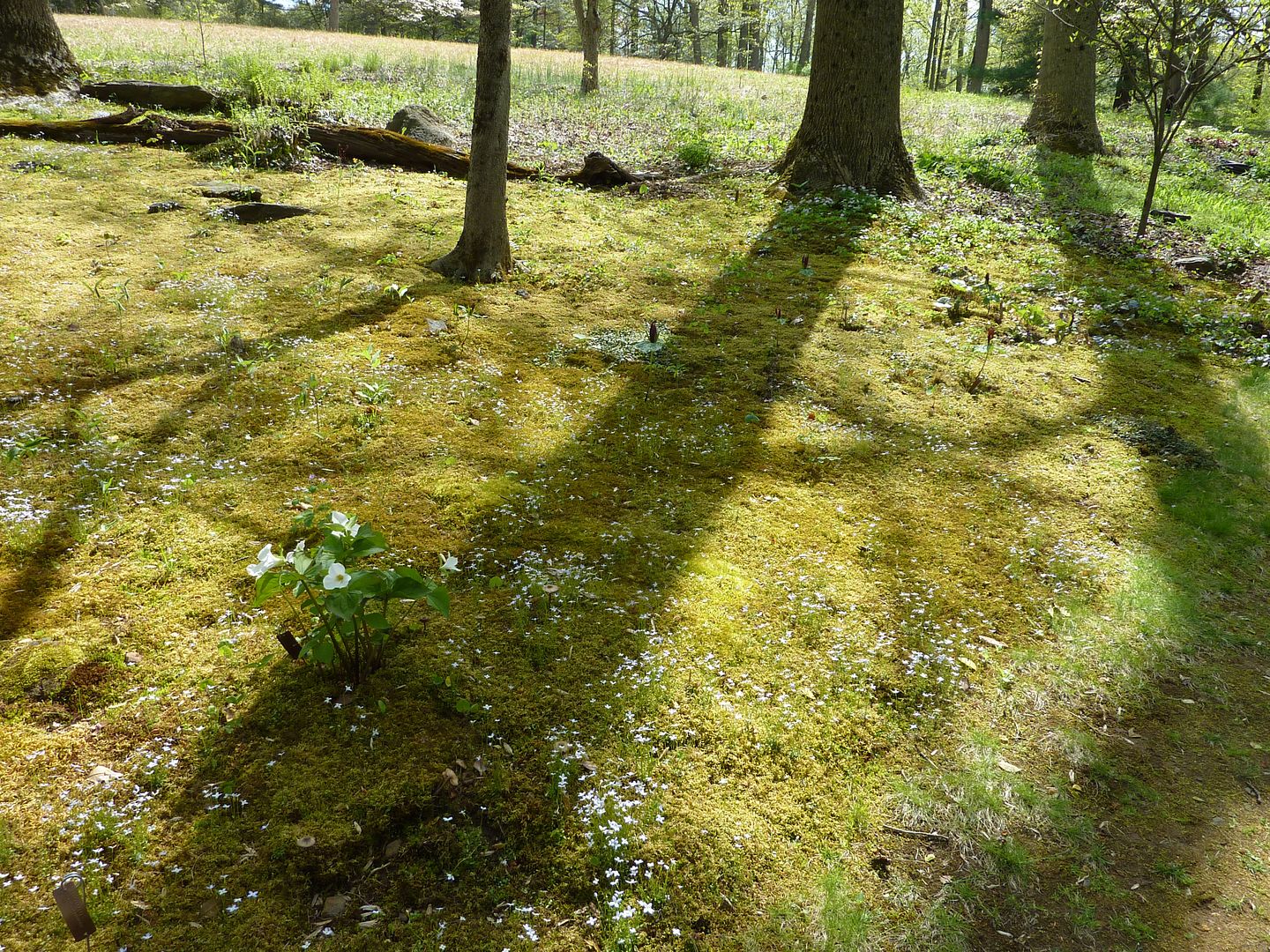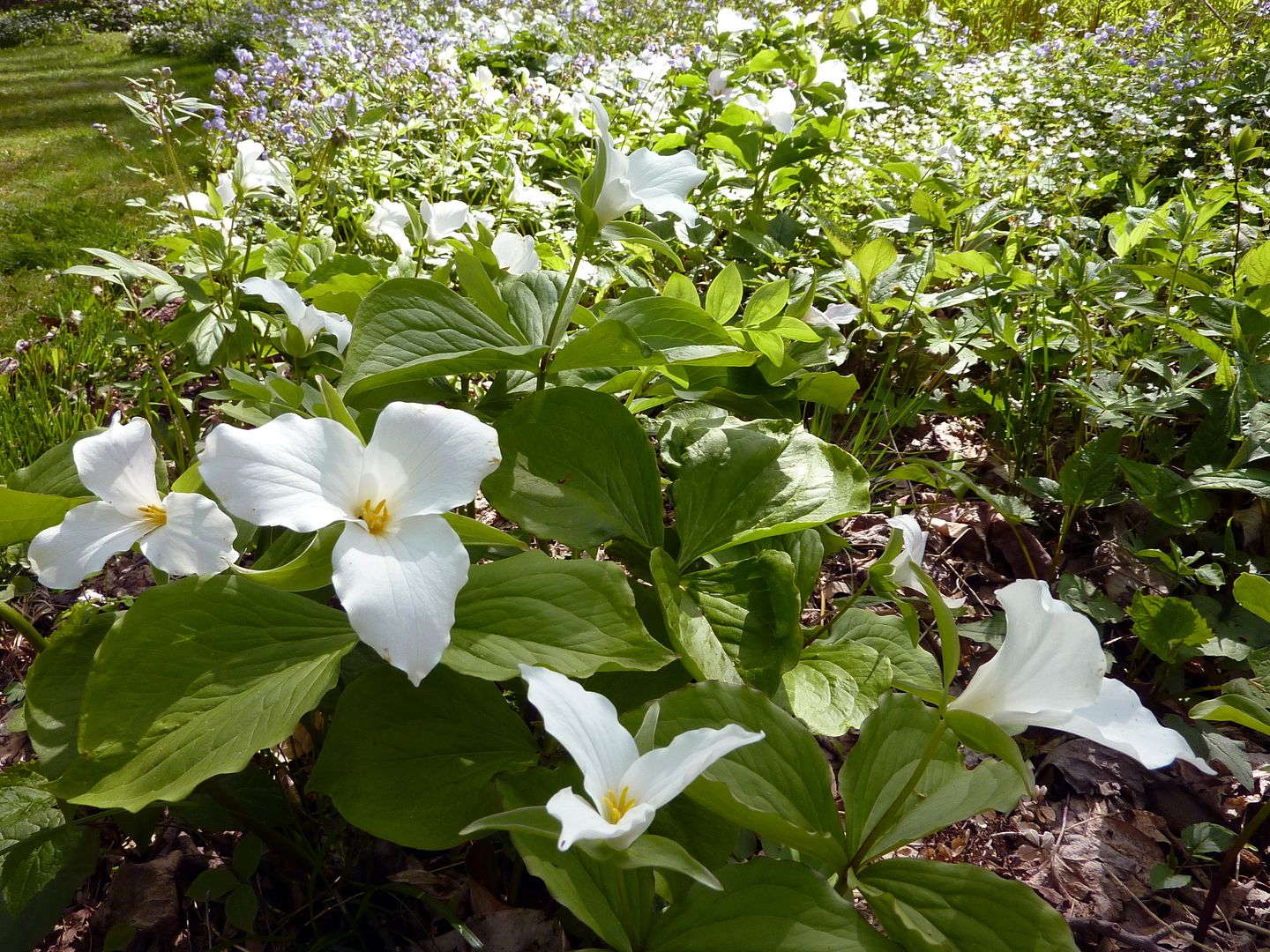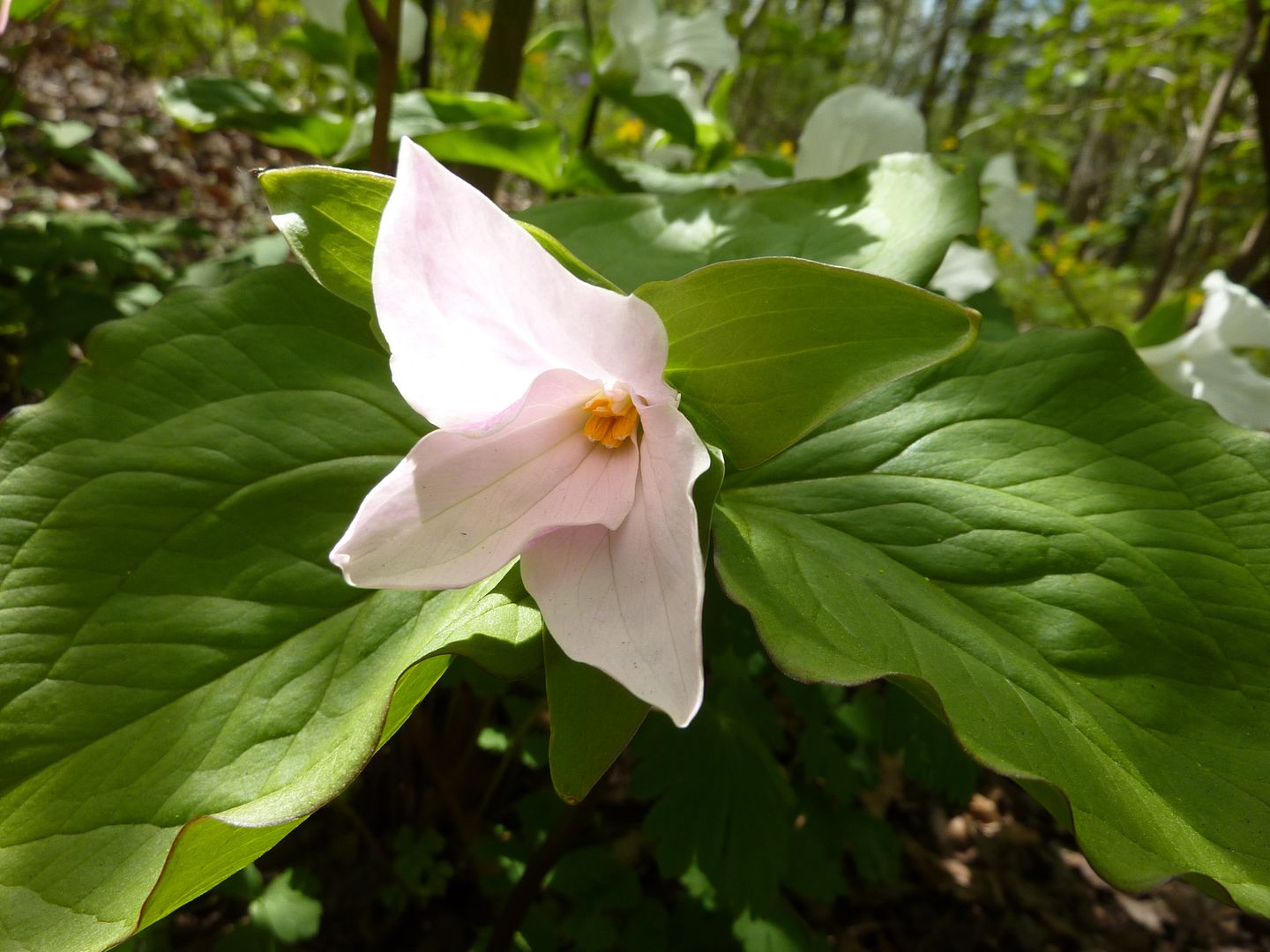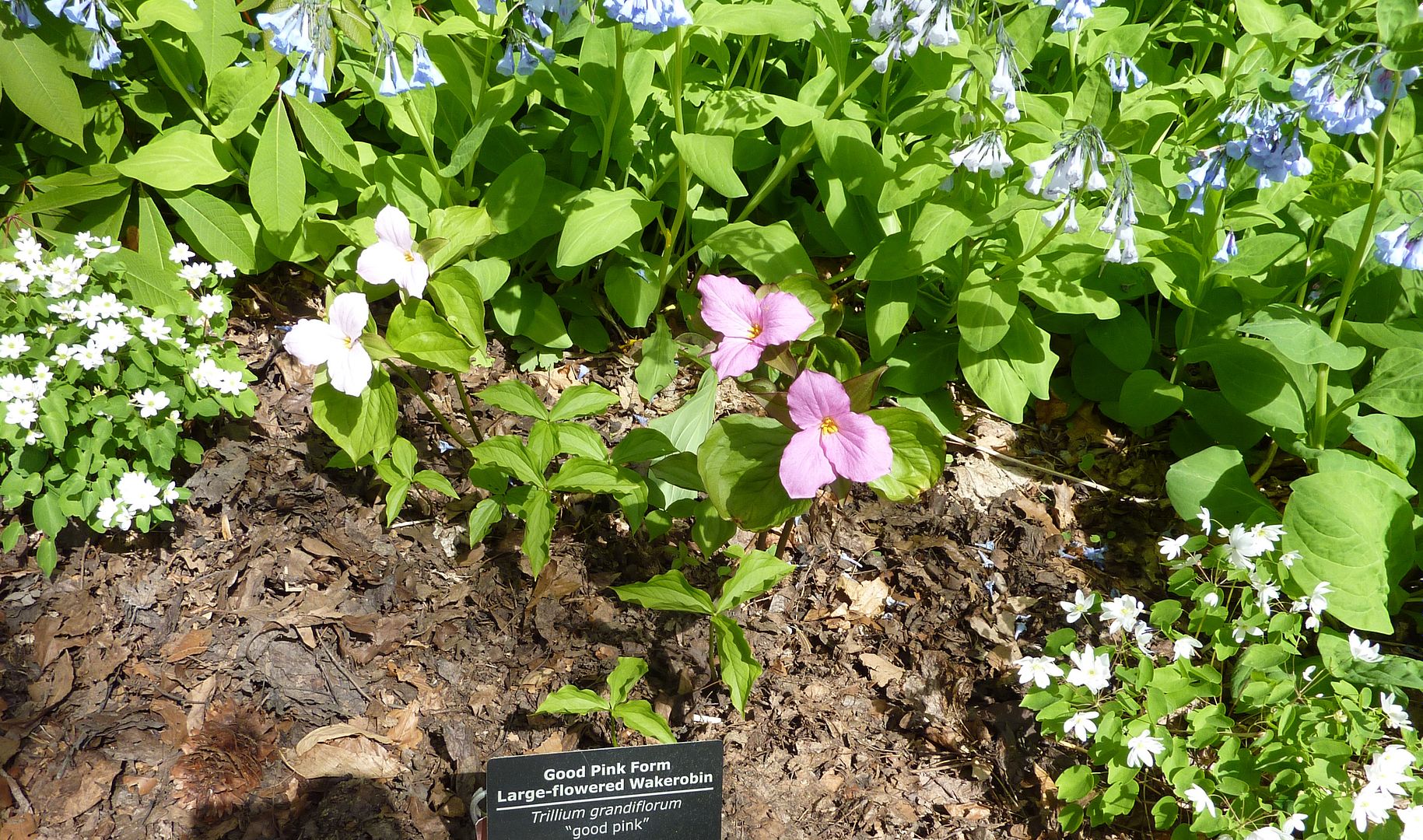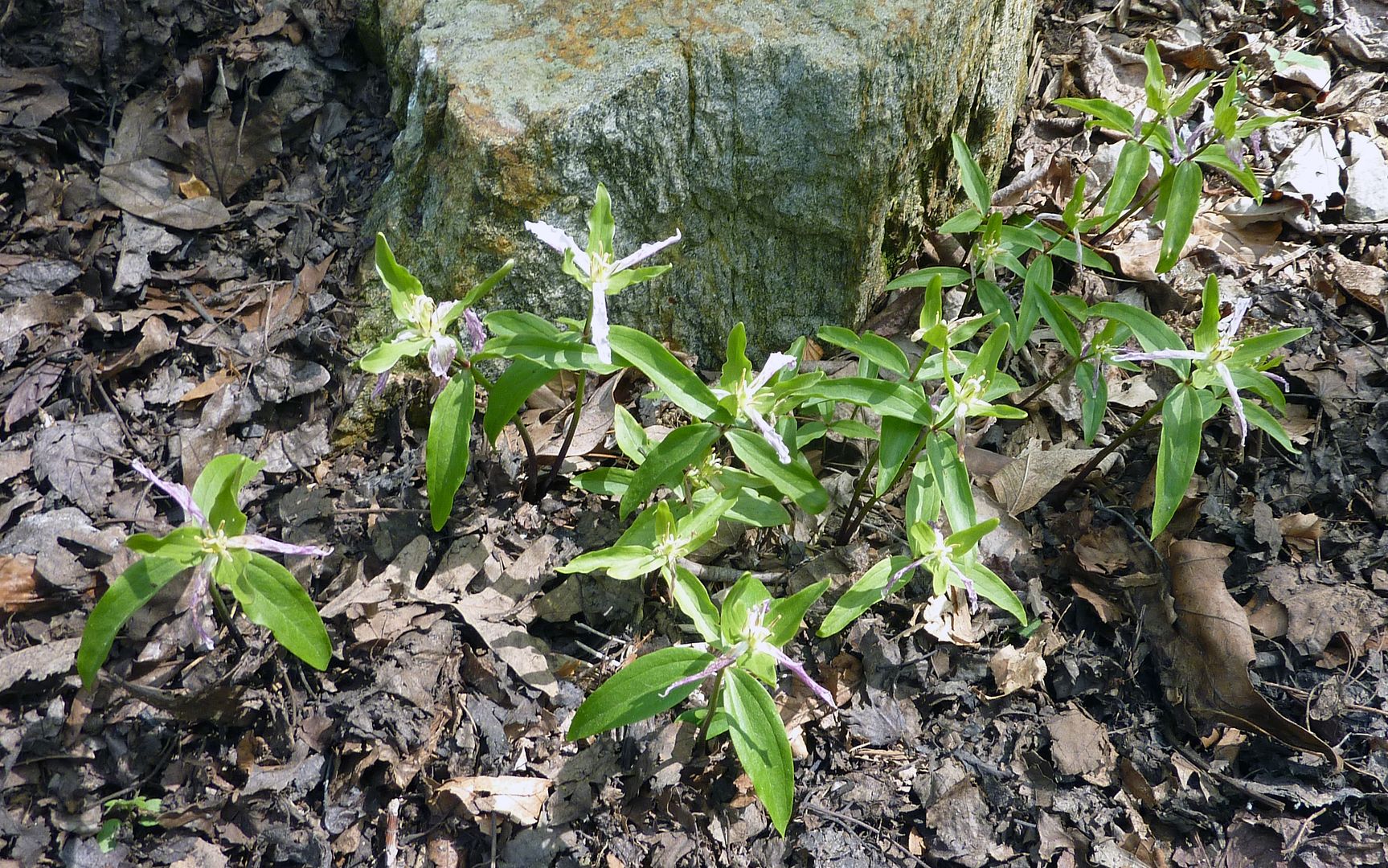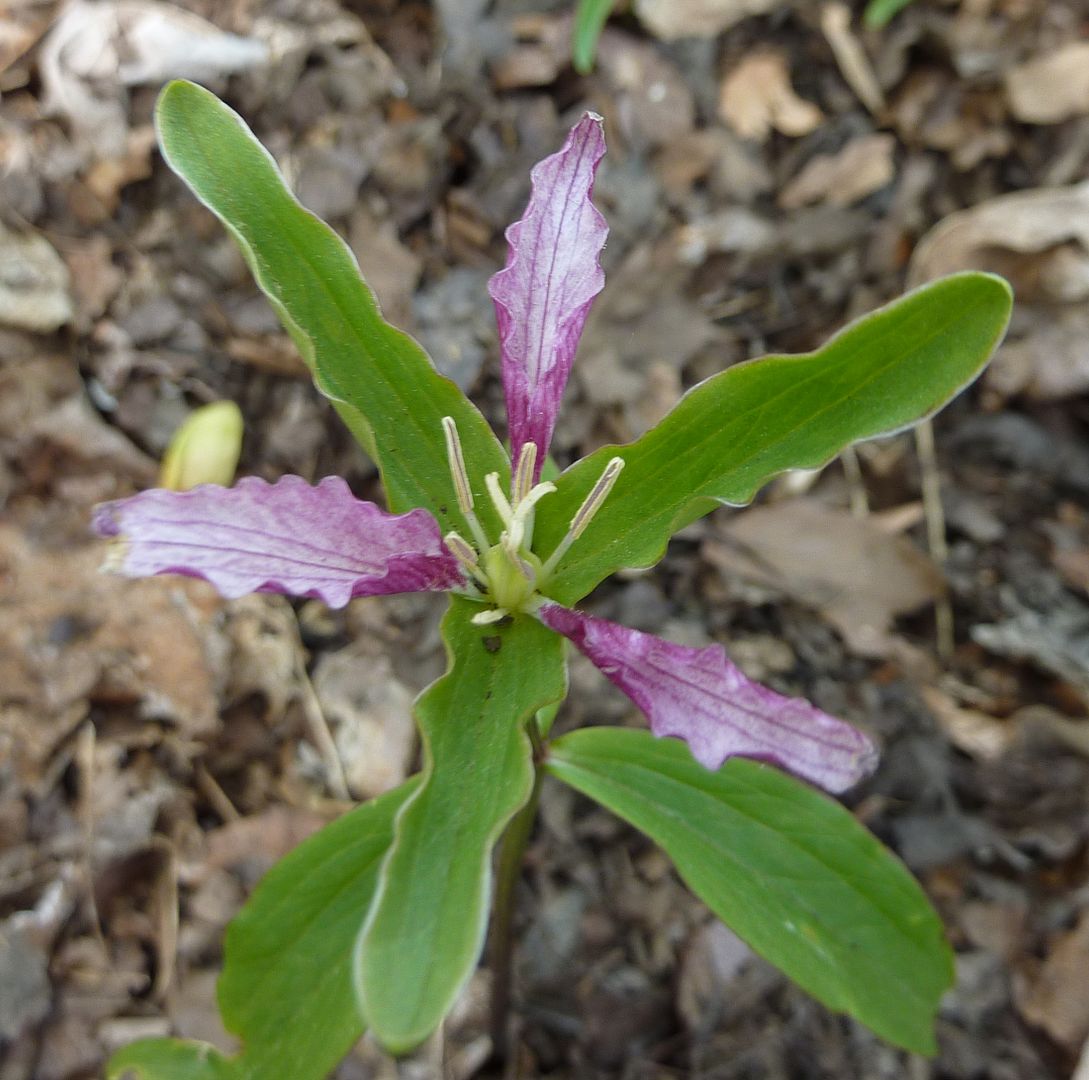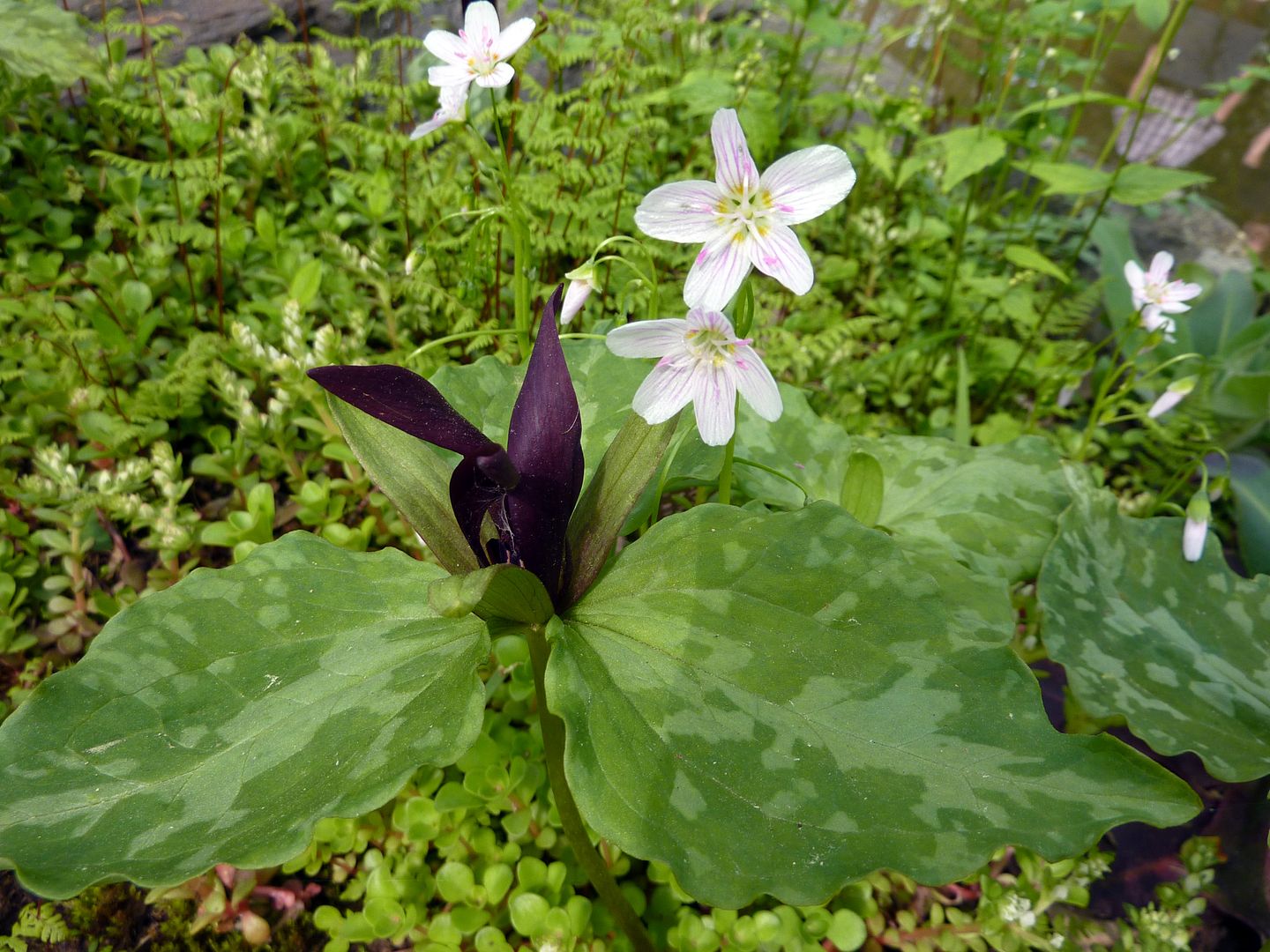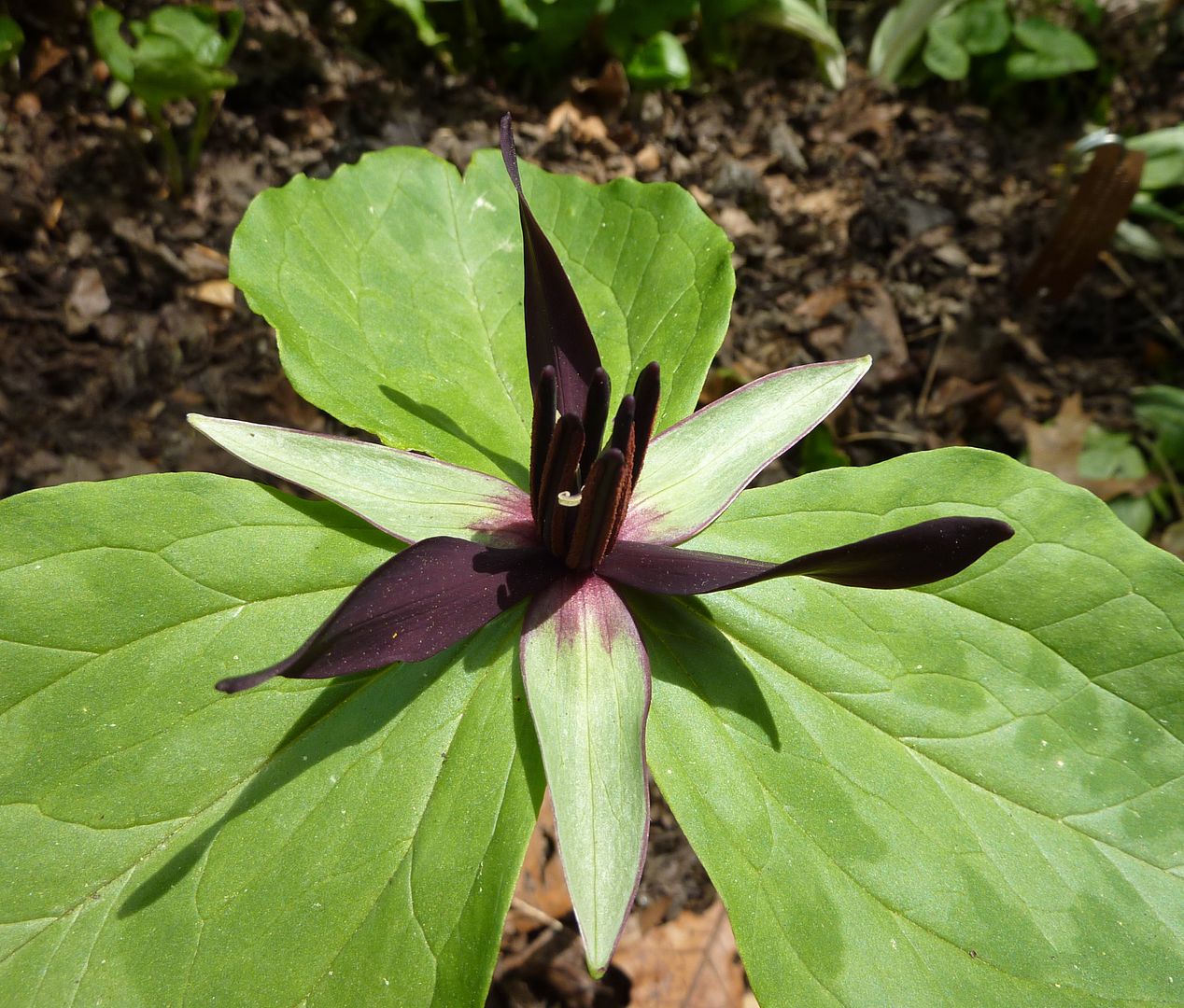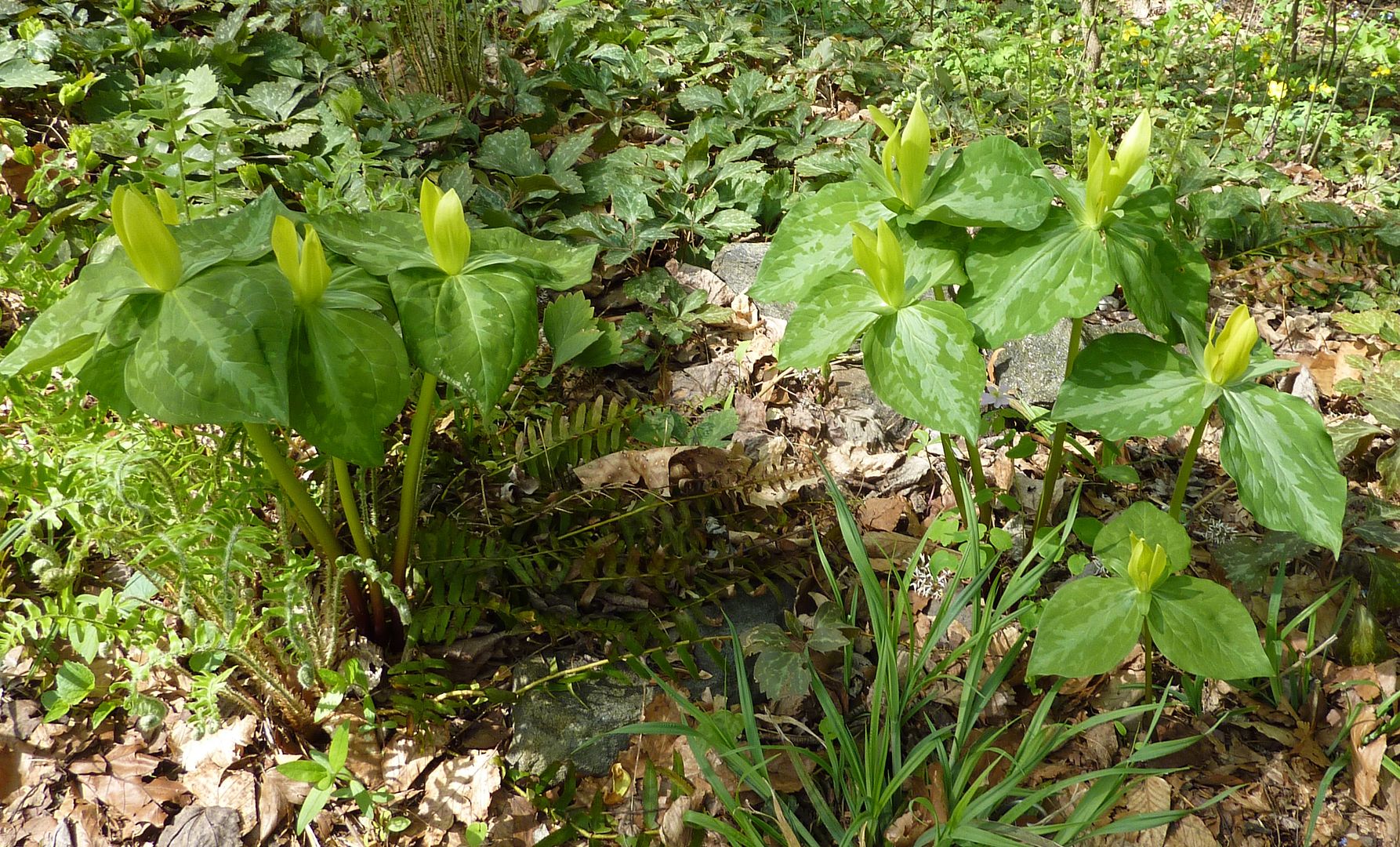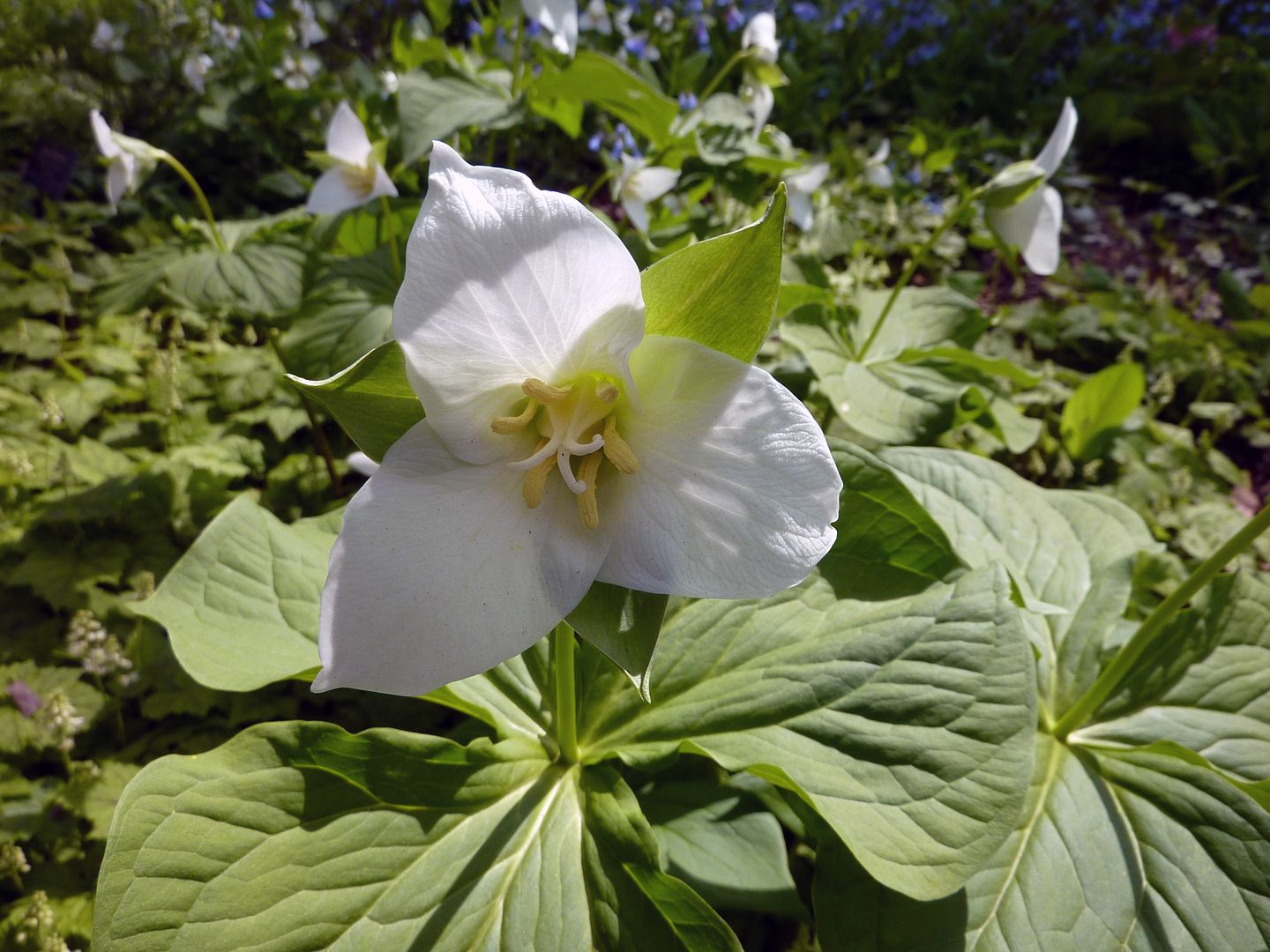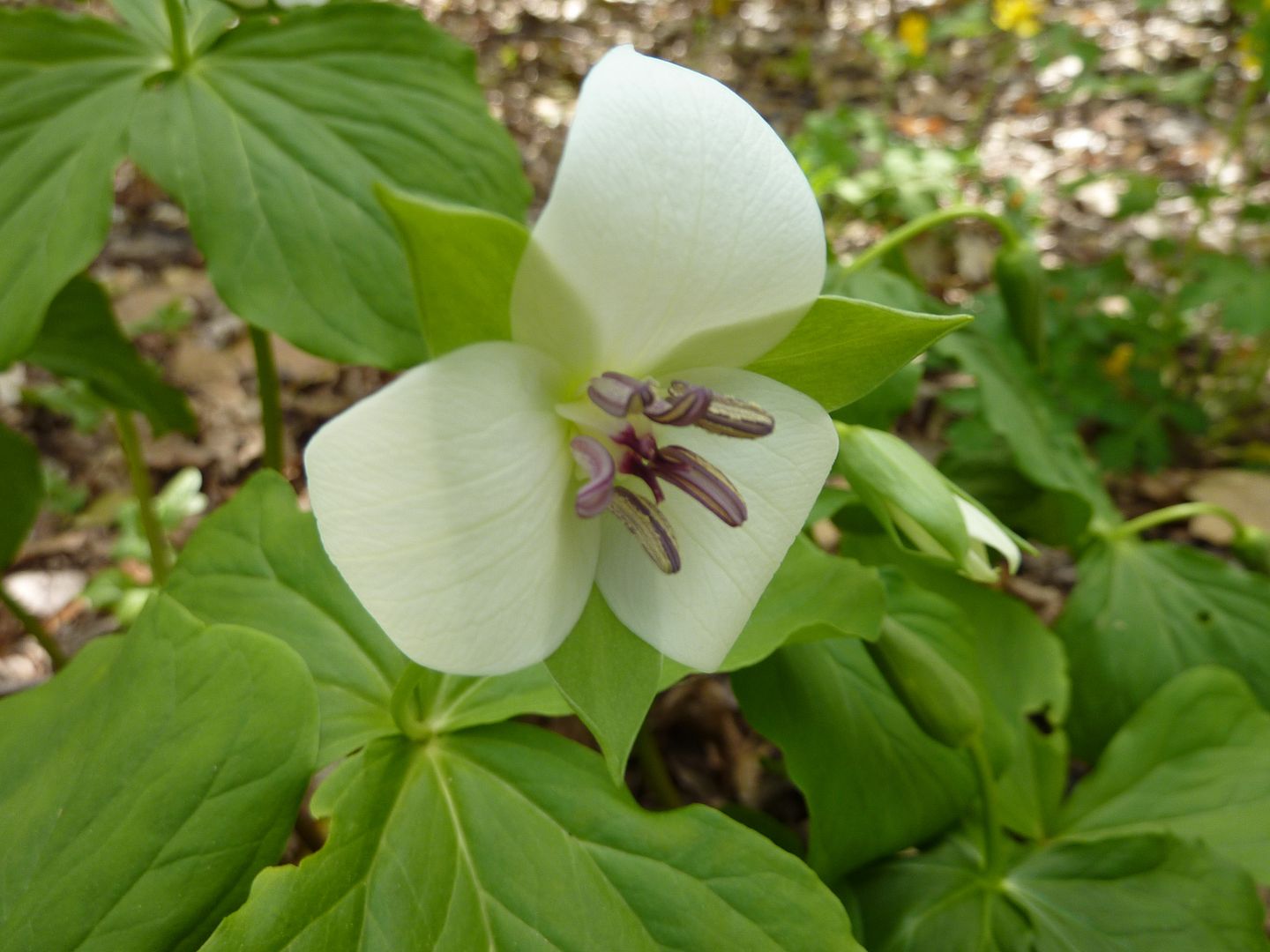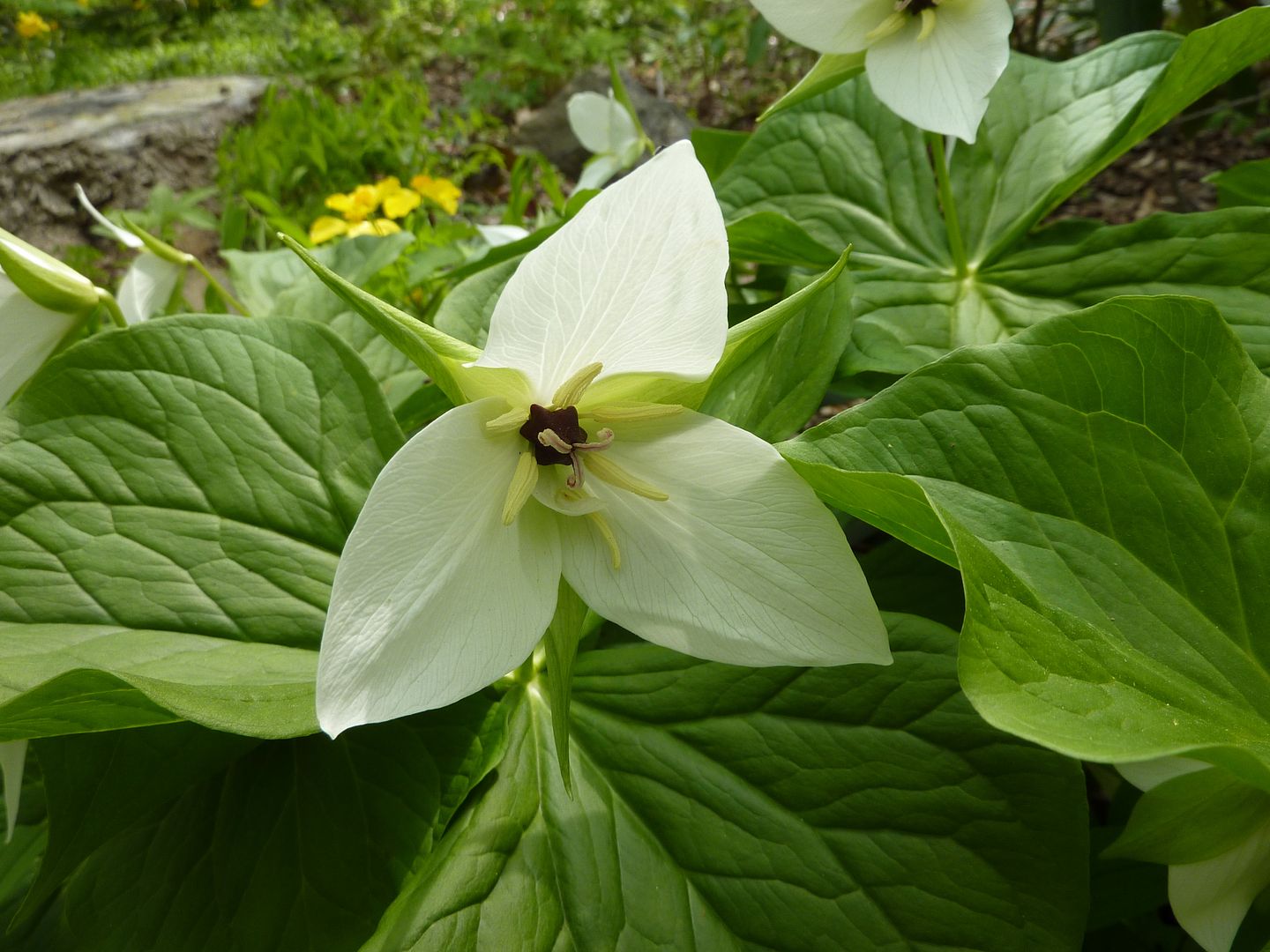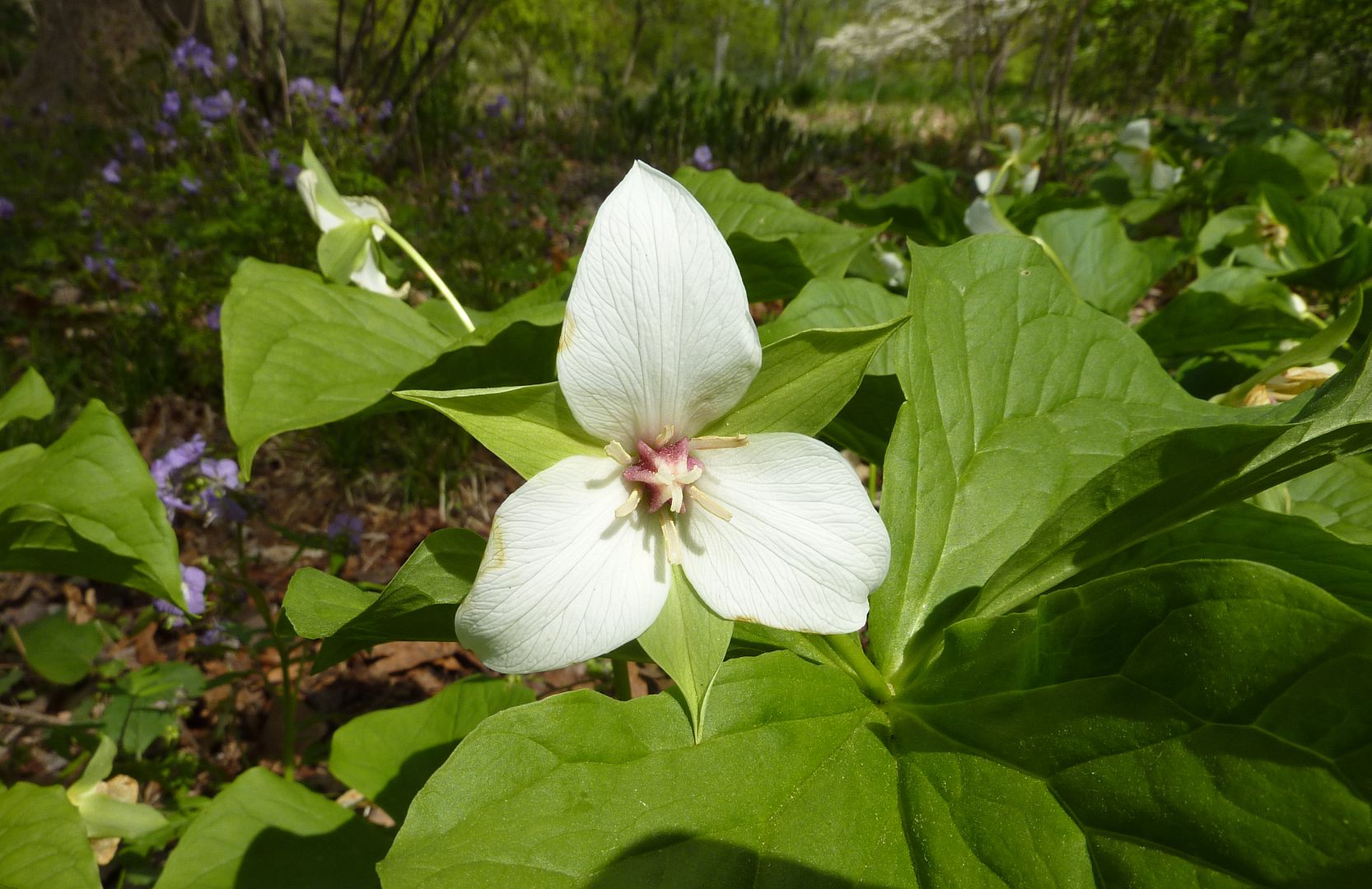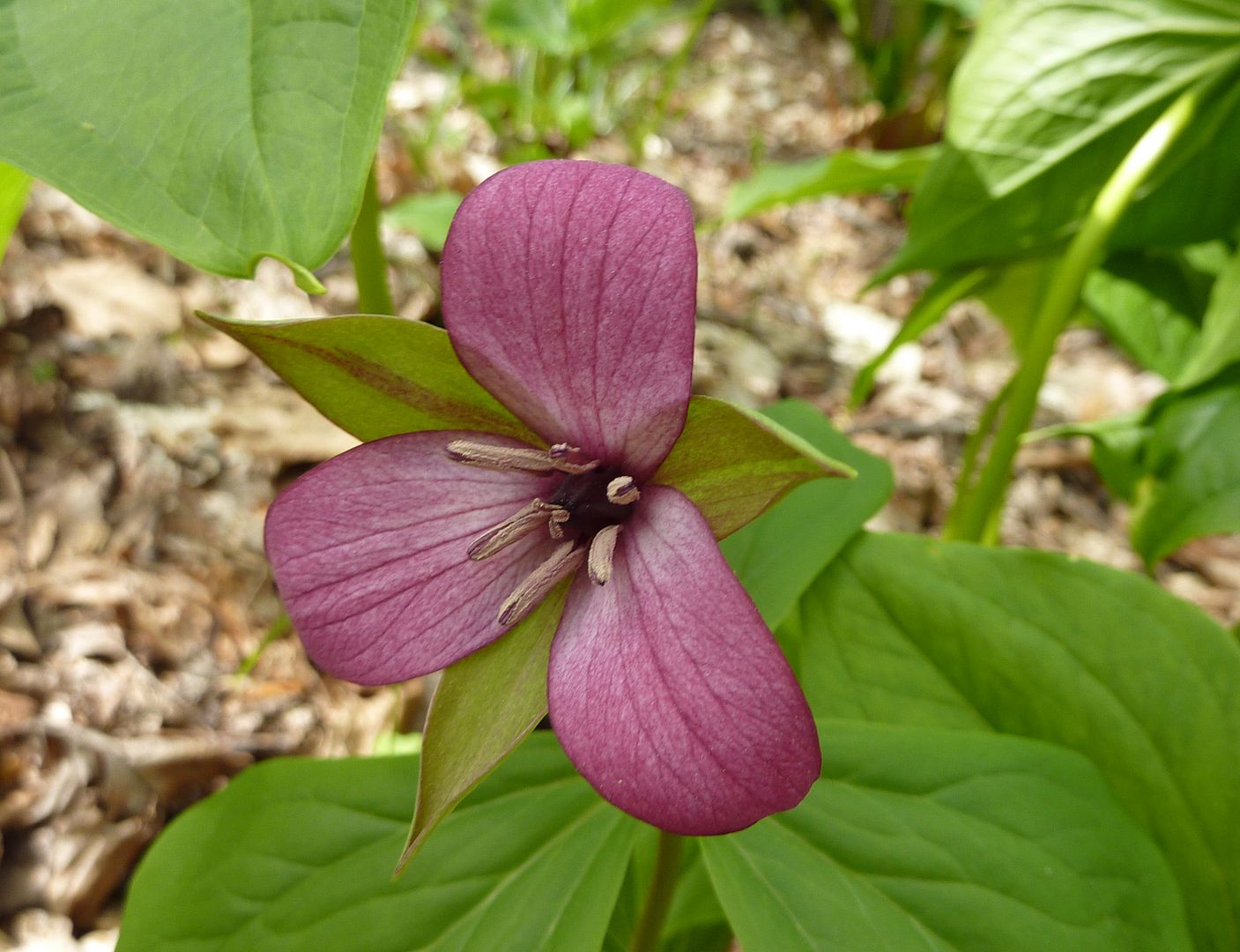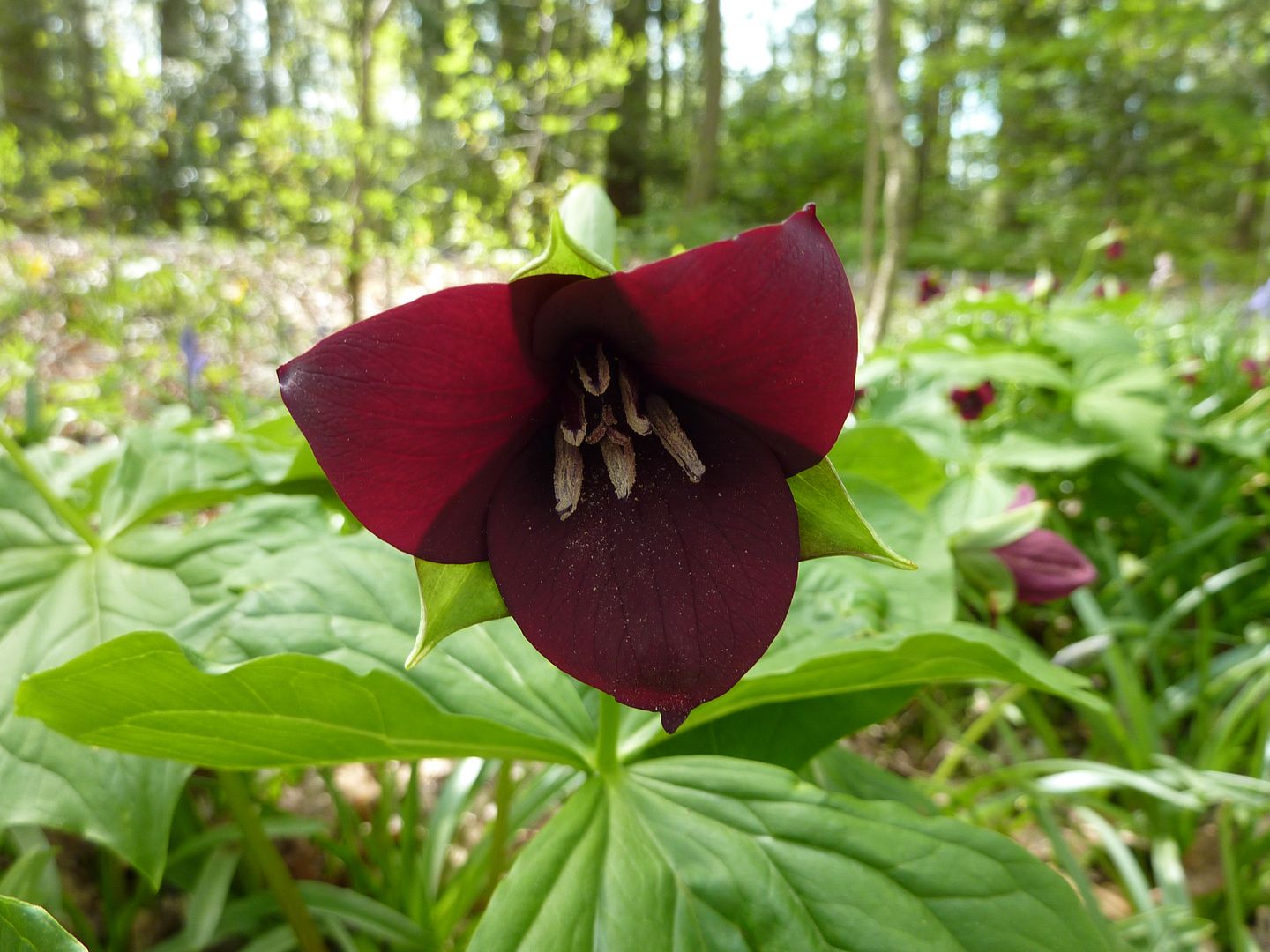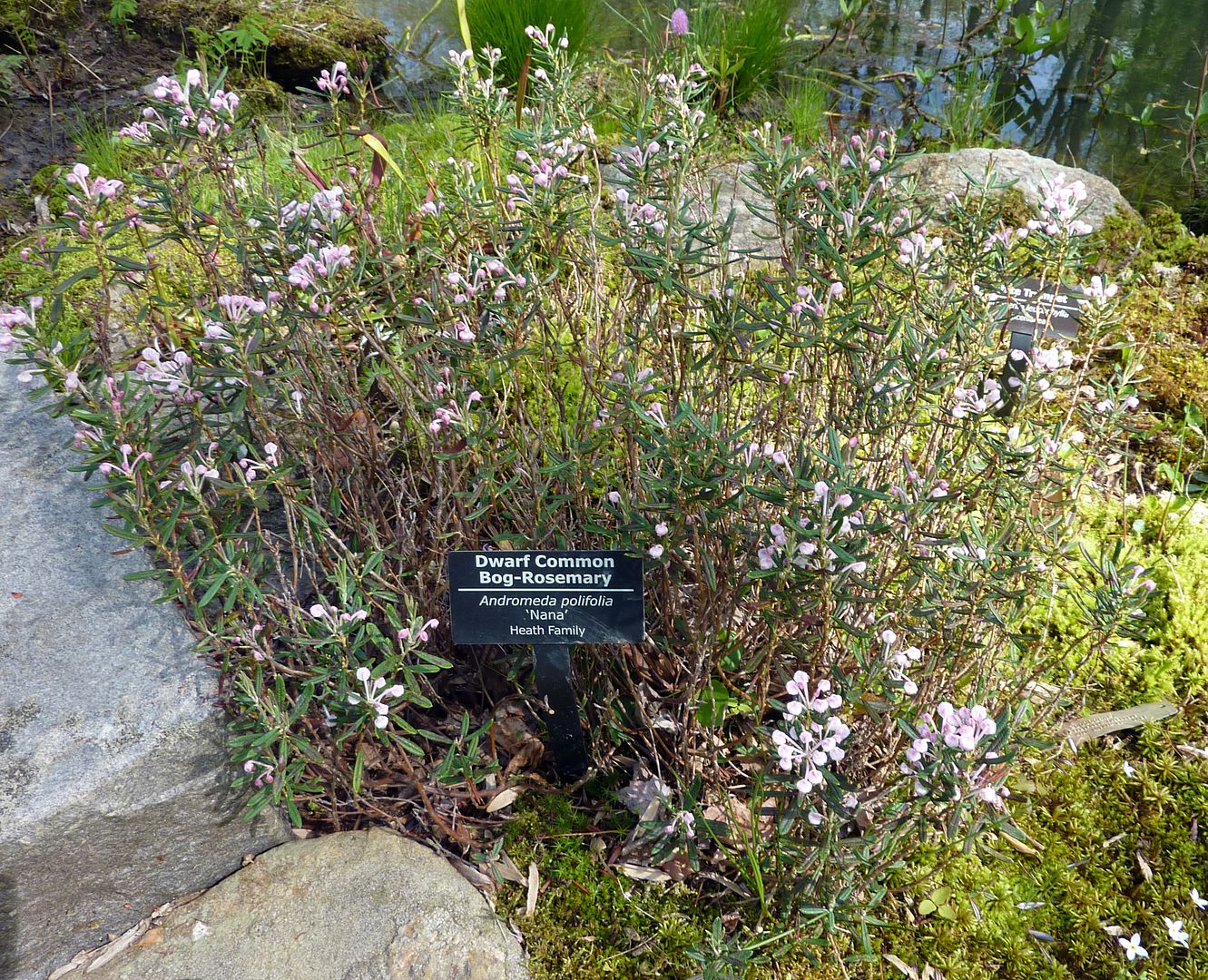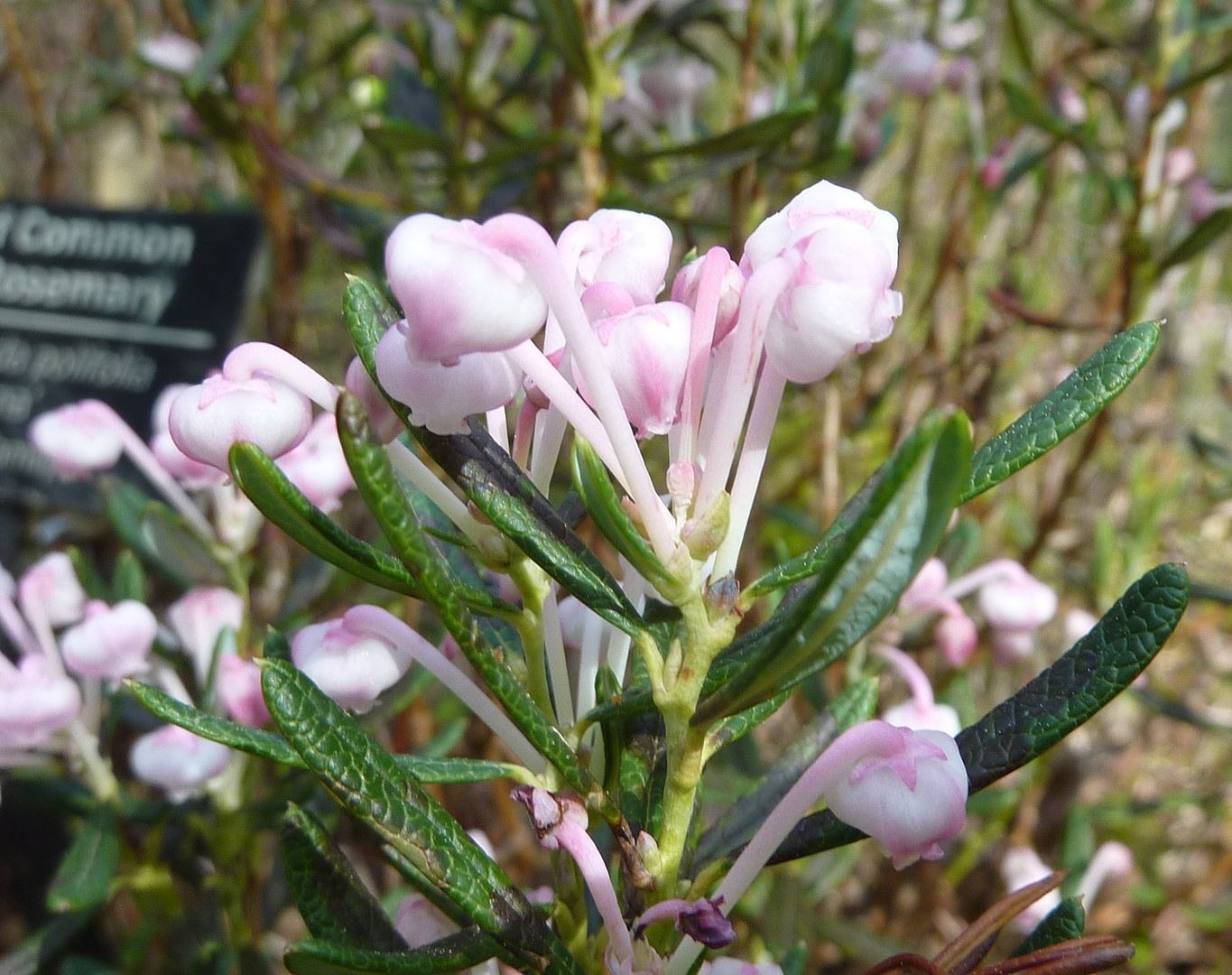There are a few wildflowers growing among the moss such as Shooting Stars, and Trilliums that still put on a good show. I actually like the shadows of the trees laying down among these delicate wildflowers. It almost tells a story.
The Mt. Cuba Center is entrusted with maintaining a variety of Trillium species, and you almost have to buy their handy book if you want to identify them all out in the gardens. Trillium grandiflorum, was probably one of the most abundant one used in the gardens, though I think T. flexipes is found in more of their gardens and is a little bit more successfully grown.
A highlight to T. grandiflorum is it's big showy white flower. This one hasn't opened fully yet but already you can tell what it is. The pollen anthers to this species typically don't poke out of the flower that far at all. About five days to a week later they'll start to all turn shades of pink and magenta and about a week after that the petals fall off completely.
Trilliums are a staple of the woodland garden and it's sinful that they're not more commonly known and grown today.
An issue with growing so many Trillium species in one place is that they're fairly promiscuous plants. In nature you'd only ever find one or two species per several miles and they'd mostly be closely related to one another. Lots of plants will abort their seeds or are incapable of cross pollinating between species. Not so in Trilliums. Little flooks of nature seem to spring up all over the place. In the interest of species purity, these hybrids were mostly moved to the outskirts of the gardens, but a few have been embraced and were even given cultivar names.
Trillium grandiflorum 'good pink' is a form that is solid pink right when it opens.
Here's a little one that I must have been ignoring all these years.
Trillium pusillum. which is only a few inches high.
This one I believe is Twisted Trillium, Trillium stamineum, which is a favorite of mine. It's also growing next to some rather tall Spring Beauty.
It's called Twisted Trillium becuase the petals twist around.
Trillium luteum, which is one of the few yellow flowering species. They actually smell sweet and citric like.
Trillium flexipes, note the white flower that's more open than T. grandiflorum, and all the yellow of the pollen anthers and cream to white the stigma and pistil look.
Nodding Trillium, Trillium cernuum, has pollen that's almost blue in color. There's also just a kiss of red on the stigma. Normally the flower is bending down under the leaves to almost face the ground but these were mostly all up and showy.
Trillium simile is an absolute favorite of mine. I don't know what it is, but that all red pistil in the middle there makes it such a nice accent of color to the pale yellows, pale greens, the white, and the leaves.
Now having looked at all those, I'm at a lose to figure out what this species is. It has the sort of red that T. simile gets, and as that seed pod develops, this is about how I'd expect that color to bleed out. But then I look at, Trillium flexipes and Trillium cernuum, and wonder well what if they get this color and lose the others they normally have. I'm leaning toward it being T. simile just past it's prime, but only because the top flower petal being slightly bigger is something I see more in that species than other, but I can't really rule out T. flexipes because I don't know how soon their seed pod gains color.
This appears to be a faded Red Trillium, Trillium erectum.
Here's what an unfaded one looks like. They smell like awful rotting fish to attract beetles and carrion flies up to them. Thankfully one has to practically stick their nose into the flower to get that effect.
Bog Rosemary, Andromeda polifolia, and Swamp Pink, Helonias bullata, growing along a pond.
I may have to get one of these. I'm fascinated because I've never heard of this plant before.
The flowers are fairly charming to look at and the foliage seems like it would be interesting at other times of the year.
Swamp Pink, Helonias bullata, is always showy to see in person. Sadly this is a threatened species, and my understanding is that the deer treat this like cotton candy in the wild. Their seeds need the perfect amount of cold hours to germinate too. One week too much or not enough and they won't grow at all.
